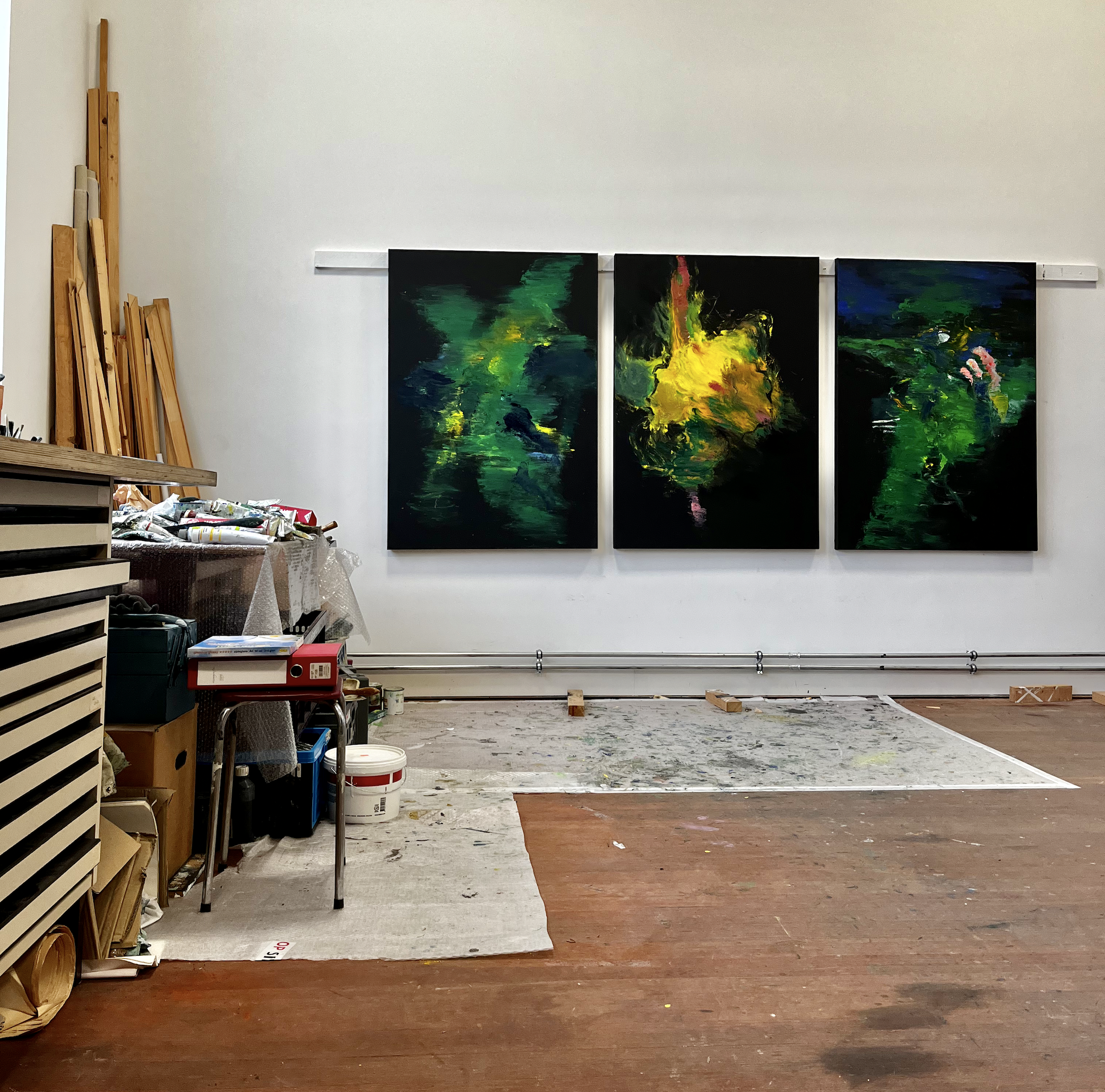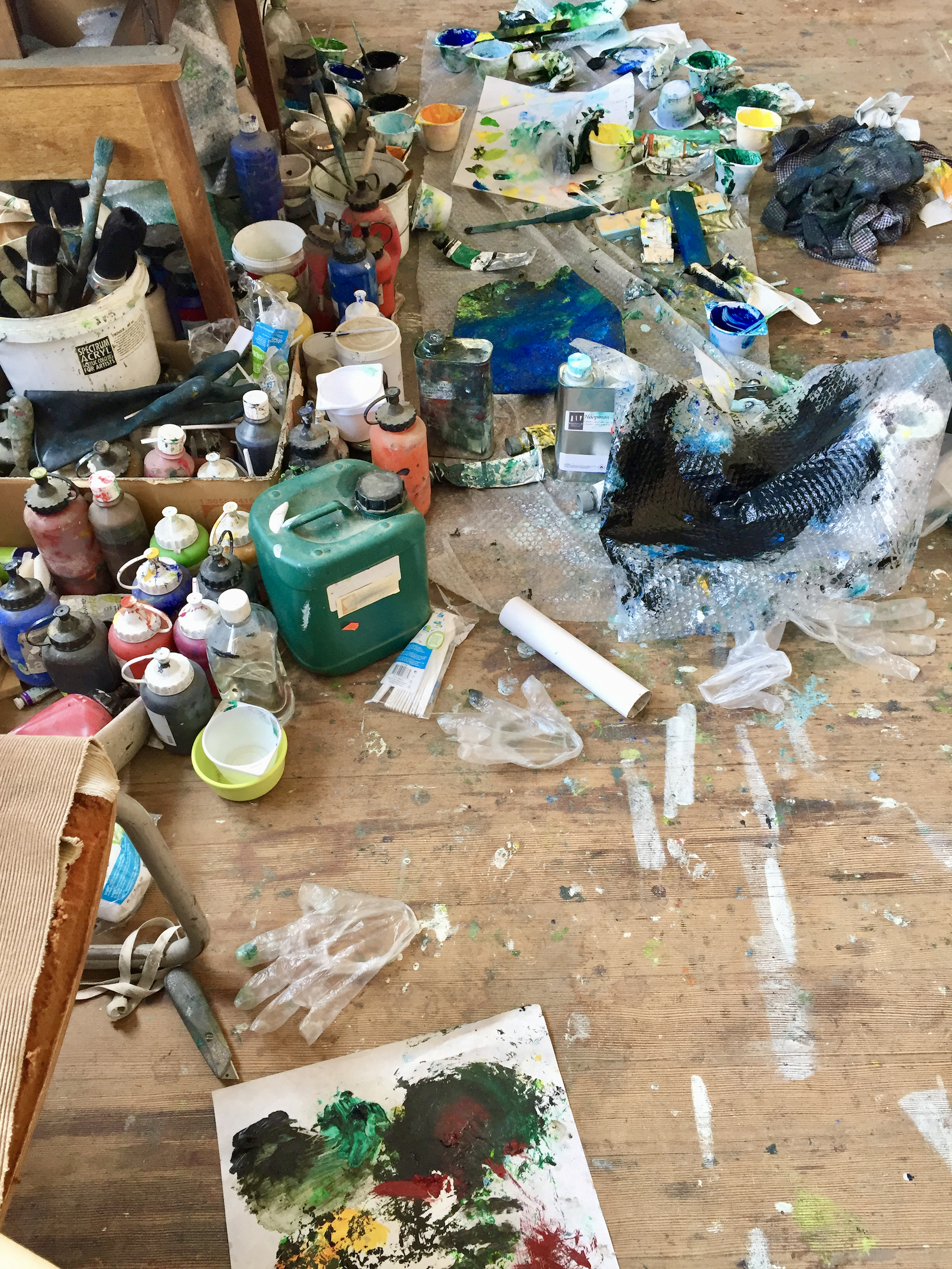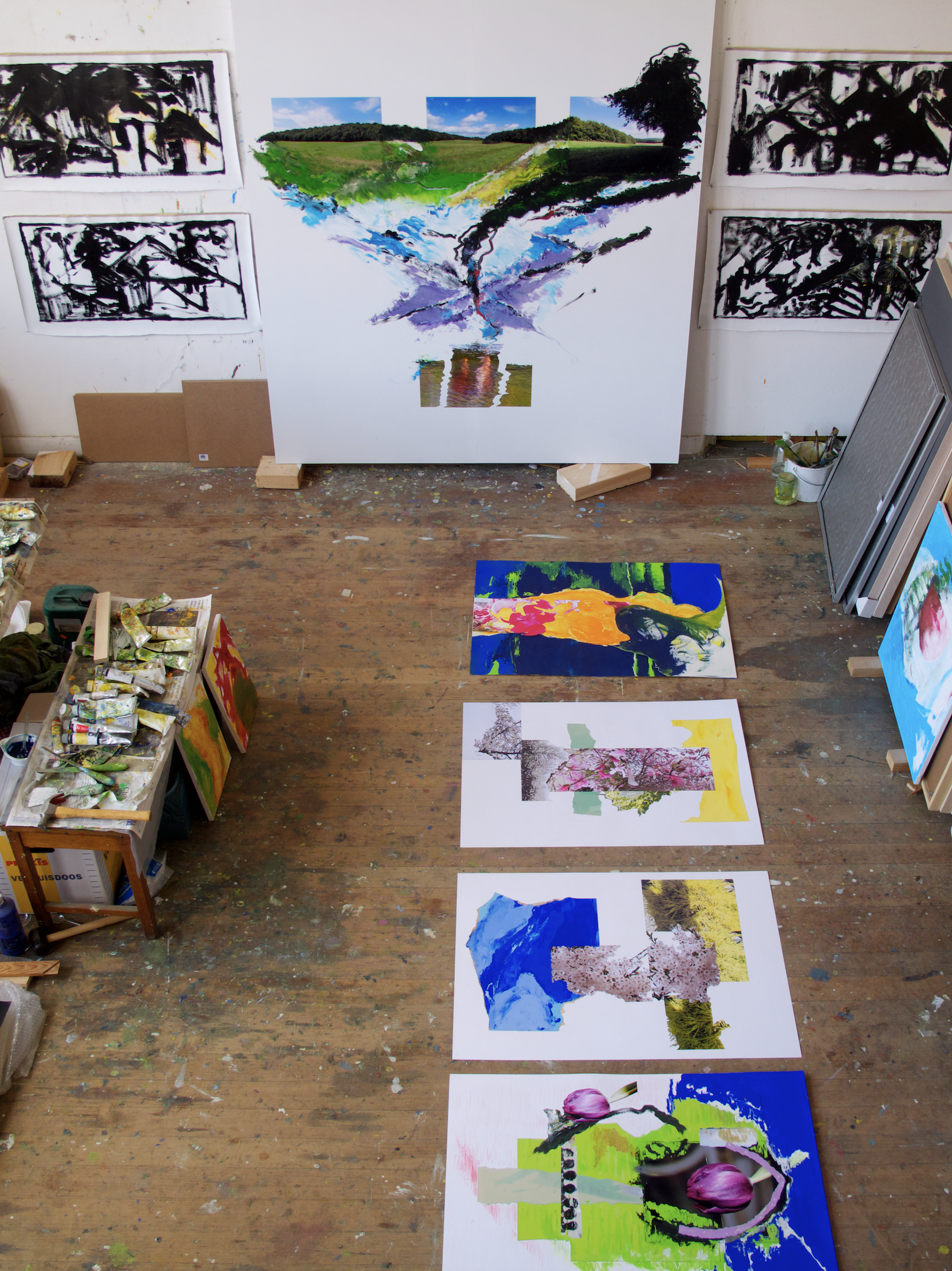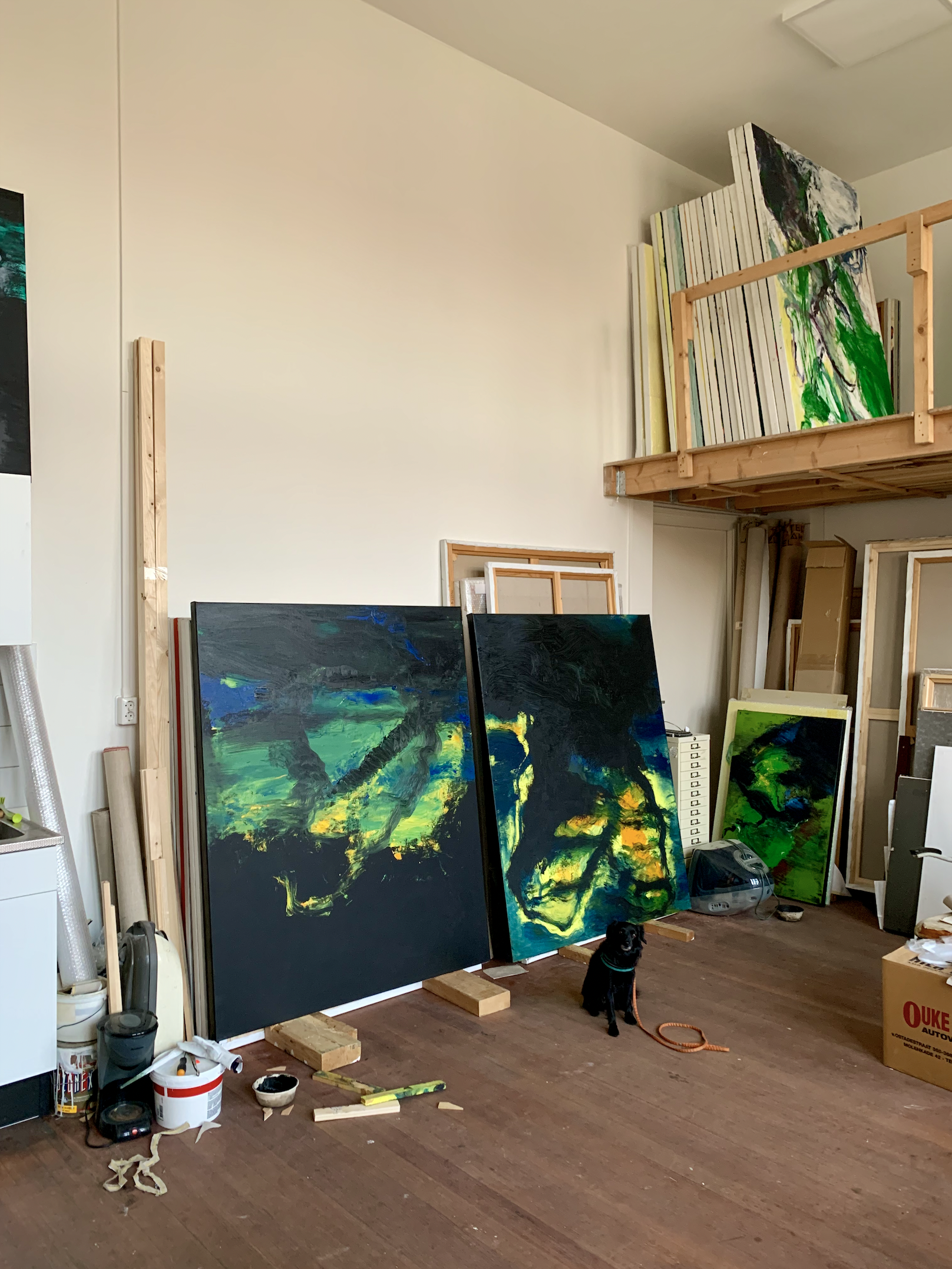25 may 2022, Oscar van Gelderen
The studio of... Jan Commandeur
What does the ideal artist’s studio look like? How much time does an artist spend there? Is it a sacred place? This week in 'The Artist’s studio' series: Jan Commandeur, who currently has a solo exhibition at BorzoGallery.
Do you visit your studio every day?
Yes. On weekdays for sure, on the weekend as it suits you.
What time do you leave for your studio, and how: on foot, by bicycle, public transport or car?
I either walk or cycle to my studio. My studio is 500 metres from home. I have learned that my concentration improves when I first cycle through Amsterdam for an hour. I then take a good look around me, at the city and at nature. I have a park in front of my house and I am often there. That's how I clear my head.

Do you hold on to certain rituals in your studio? Music or silence?
I always turn on the radio at a low volume, mostly classical music. I don't want to be surrounded by silence. I love music in the background. I used to listen to some incomprehensible French channel too, where they only chatted with those soft French voices. That channel was transmitted was on the AM waveband, and I wouldn't know where to find it now. I didn't understand a word of what was being said, but that wasn't the point.

How important is light to you?
Light is very important. My studio in the Westerpark district faces east. In the morning it's sunny, but that’s of no use. The light in my studio is at its best when the sun is gone. Around noon the sun is usually gone and it improves during the afternoon. In the summer I can go on until ten o'clock in the evening if I want and in the winter until six o'clock in the evening. Since the renovation of my studio, the artificial light has improved a lot, so I can also work in the evenings.
What does your work process look like? Do you work everywhere and all the time or does work only commence the moment you enter your studio?
The work always goes on. I always think about it. When setting up a new painting, I start sketchily with large strokes of paint; the contours of a landscape, without a horizon. I also often work from home in the evenings. When I've painted, I take pictures of it that I study in the evening. I sometimes look at the photos for hours, think about problems in the image and try to envision the next step. Usually, after looking for a long time, a solution presents itself. It could be adding colour, it could be a painterly act. I try to interpret an image for myself in order to gain clarity about what I want to make. Through these actions I start to see alienation and contradictions in the painting, which inspire me to continue. Actually, I 'organize' my head by looking at my paintings that I am working on at that moment. I always look for an abstraction in the work that gives clarity and forms a kind of emotional undertow of what I have ever seen or experienced.
How much time do you spend on average per day in your studio?
Five or six hours on average.

Is your studio a sacred place?
Yes, it is to me. I am there on my terms and can only orientate and concentrate there. It is a place where I can shape everything I experience in an effective way. I'm not waiting for inspiration or anything like that. I can't judge whether a painting is good until the next morning. When I enter my studio the next day and see the painting, it immediately says: I'm finished or I'm not finished. Entering the studio is therefore the most important moment for me.
Do you receive visits there; collectors, curators or fellow artists?
Yes, by appointment. I clean up my studio before and show what I want to show. I rarely show work that has not yet been completed. Then my concentration on that work is gone.
What is the most beautiful studio you have ever seen?
I once saw a beautiful photo of Willem de Kooning working in his spacious and bright studio on Long Island.
What does the ideal studio look like?
Lots of indirect light, high walls which allow me to make large paintings. Lots of peace, no outside noise. And lots of space and storage!


